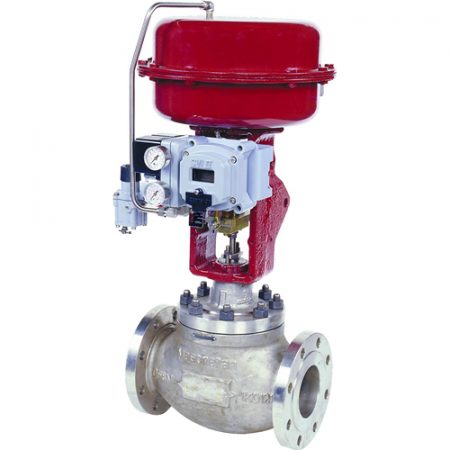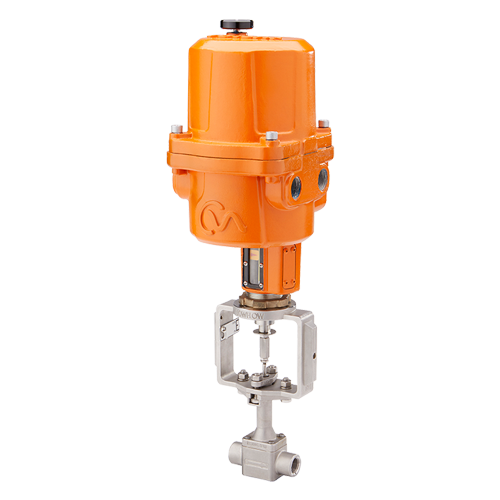Picking the Right Control Valves: An Overview to Optimum System Efficiency
Picking the Right Control Valves: An Overview to Optimum System Efficiency
Blog Article

Maximize Power Savings and Comfort With Advanced Building Automation Controls
In the realm of contemporary style and facility administration, the assimilation of sophisticated structure automation controls stands as an essential development. By taking advantage of the power of automation, buildings can adapt, react, and advance in ways that were as soon as inconceivable.
Power Efficiency Perks
Energy effectiveness advantages can considerably minimize power usage and functional costs in buildings. By executing energy-efficient techniques and modern technologies, building proprietors and drivers can attain significant financial savings while also contributing to environmental sustainability. One of the main benefits of boosting power performance in buildings is the reduction of utility expenses. Energy-efficient systems, such as innovative building automation controls, can optimize the use of sources like lighting, home heating, and cooling, leading to lower power expenditures in time.
Additionally, improved energy performance can lengthen the life expectancy of building tools and systems. By running extra successfully, a/c systems, light, and other building components experience less deterioration, leading to decreased upkeep and replacement prices. Furthermore, energy-efficient buildings often regulate higher home worths and rental rates, offering lasting economic advantages to owners.
Furthermore, power performance can improve resident comfort and productivity. Effectively controlled interior atmospheres with optimal illumination and thermal conditions develop a more conducive and positive work area, bring about enhanced employee complete satisfaction and efficiency. Generally, the energy performance benefits related to sophisticated structure automation controls are multifaceted, incorporating cost savings, environmental stewardship, and resident well-being.
Boosted Comfort Control
Enhancing comfort control in building atmospheres calls for an advanced integration of innovative automation systems for optimal resident wellness. By using sophisticated building automation controls, facilities can customize the interior atmosphere to satisfy the particular needs and choices of passengers. control valves.
By integrating these innovative controls, buildings can not just enhance convenience yet likewise boost energy efficiency by enhancing system operations based on real occupancy and use patterns. Ultimately, focusing on occupant comfort via sophisticated automation systems leads to a more delightful and healthier interior environment.
Functional Effectiveness Improvements

Furthermore, the execution of real-time tracking and analytics devices allows structure operators to identify power ineffectiveness and operational abnormalities without delay. By constantly checking energy usage patterns and system performance metrics, modifications can be made in real-time to optimize power intake and make sure peak functional efficiency. control valves. Furthermore, including demand reaction methods right into structure automation controls can even more improve functional performance by dynamically adjusting energy usage based upon grid problems and rates signals
Indoor Environment Optimization
Efficient indoor environment optimization is a fundamental element of structure automation controls, making sure occupants' comfort and wellness while optimizing power savings. By utilizing advanced sensors and controls, developing automation check out this site systems can constantly readjust and check temperature level, moisture degrees, air high quality, and air flow to develop an optimum his comment is here interior atmosphere. Keeping comfy and regular problems not just enhances occupant fulfillment yet additionally boosts performance and overall health.
Interior environment optimization additionally plays a crucial role in energy performance. By fine-tuning ventilation, home heating, and air conditioning systems based upon real-time data and tenancy patterns, constructing automation controls can dramatically lower energy consumption - control valves. For example, applying approaches such as demand-controlled air flow and thermal zoning can help reduce power waste while ensuring that each location of the structure gets the required conditioning.

Sustainable Environment Creation
Structure automation regulates not just enhance indoor climate conditions for power performance and passenger comfort but also lay the structure for developing a lasting atmosphere through strategic monitoring of resources and systems. By incorporating sophisticated building automation innovations, such as sensors, actuators, and smart software application, facilities can readjust and keep an eye on energy use in real-time to lessen waste and minimize their carbon footprint. These systems make it possible for anticipating upkeep, determining potential issues prior to they intensify and optimizing tools efficiency to boost long life and effectiveness.
Additionally, sustainable environment creation extends beyond energy monitoring to incorporate water preservation, waste decrease, and interior air high quality improvement. Structure automation controls can regulate water use, find leaks, and make certain appropriate waste disposal techniques, contributing to total sustainability efforts. Furthermore, by managing and monitoring air flow and filtration systems, these modern technologies improve passenger health and productivity while lowering power intake connected with HVAC procedures.
Final Thought
Finally, progressed structure automation manages offer considerable advantages in terms of power savings, convenience control, functional efficiency, indoor climate optimization, and creating a lasting environment. By carrying out these controls, buildings can accomplish optimum performance while decreasing energy usage and boosting passenger comfort. It is apparent that making use of innovative automation technology is essential in enhancing structure performance and developing a much more lasting future.
Power performance advantages can considerably minimize power usage and functional expenses in structures. Generally, the power performance advantages linked with innovative structure automation controls are complex, incorporating cost savings, environmental stewardship, and resident wellness.
Furthermore, integrating need action approaches right into structure automation controls can additionally improve operational effectiveness by dynamically adjusting energy usage based on grid conditions and pricing signals.
Structure automation controls not just enhance indoor environment conditions for energy performance and resident comfort yet also lay the foundation for developing a lasting environment via strategic monitoring of systems and sources.In final thought, advanced structure automation regulates deal significant benefits in terms of energy financial savings, comfort control, operational performance, indoor climate optimization, and developing a lasting environment.
Report this page